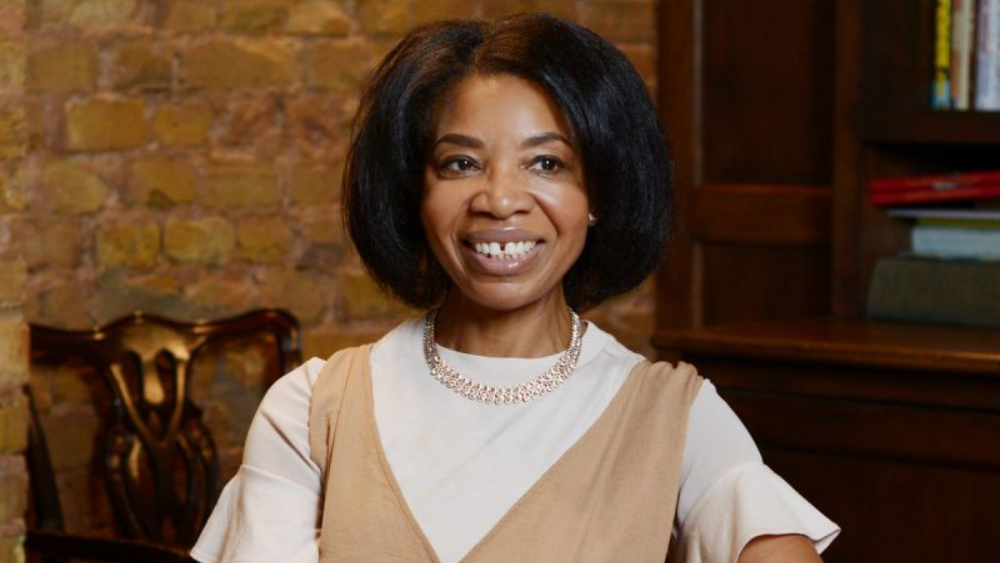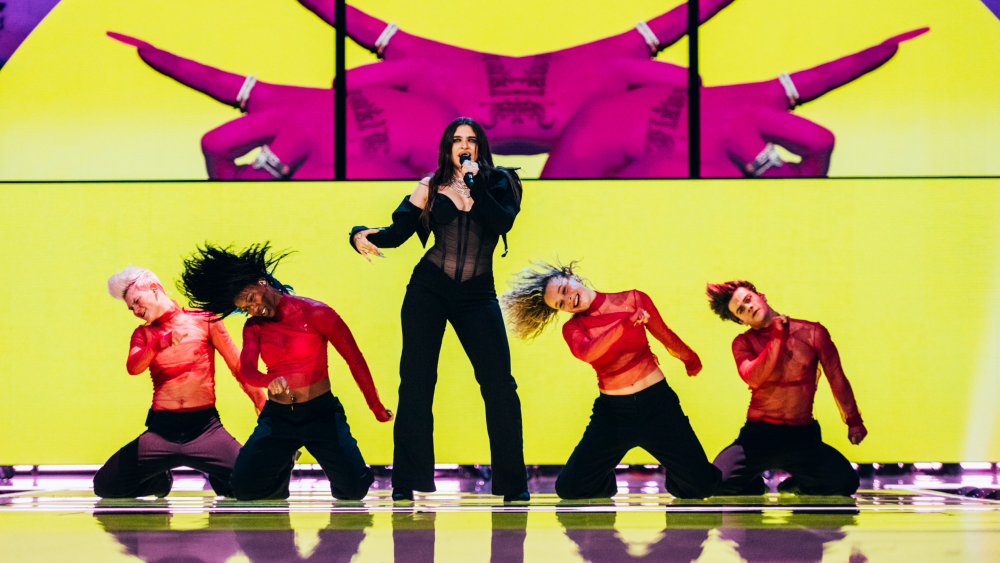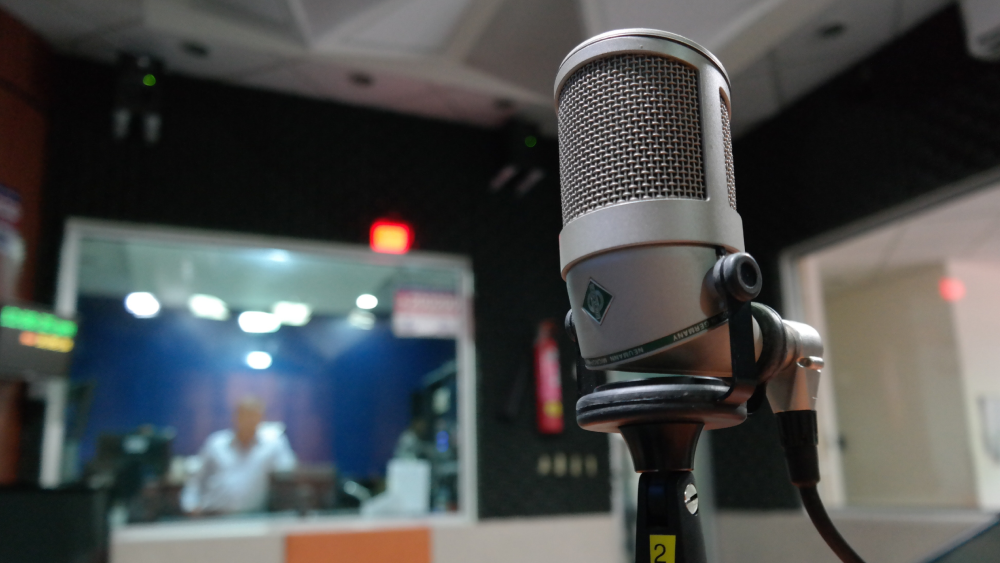Works well with others is an understatement when describing Hifi Sean. From those indie-lustrous days with The Soup Dragons to his collaborative work with Yoko Ono, Bootsy Collins, Crystal Waters, Dave Ball, Fred Schneider and Alan Vega and his US chart topping single Testify via his legendary DJ sets on the LGBTQ+ club scene, Sean has always kept his trajectory starward. So, when Sean connected with David McAlmont in 2017, we knew the stars were aligning for something very special. David has become one of the UK's most beloved performers, be it beside Butler or inhabiting Bowie with his legendary Hideaway songbook shows. Combine David’s astonishing vocals with Sean’s sublime studio craft and McHifi’s 2020 debut single Bunker to Bunker soon reached the heights of critical commendation.
With their new album set to launch early next year Kate Wildblood, caught up with the duo to discuss collaboration, the creative process in lockdown and what inspires their divine work together.
'I think we might have thought that gay men were an enlightened lot. Turns out they’re human like everybody else. We’re human too.'
Kate Wildblood: So how did you both meet?
Sean Dickson aka Hifi Sean: I made an album called Ft. a few years ago where I asked artists I respected and wanted to collaborate with to work with me and David was high up on my list. Through that experience we became good friends and the music started to flow from there, mutating into what we now know as McHifi. Just two friends making music, enjoying themselves and the creative buzz.
David McAlmont: I’d freshly returned from Guyana after nine years. I watched Channel 4’s The Chart Show and was a bit weirded out by the section called The Indie Chart. I had no idea what indie was, and I’d never heard music like it. One of the bands was The Soup Dragons. Years later, this DJ made friends with me on Facebook. I thought, 'Yeah. I’ll make friends with a DJ.’ Then I asked the hive mind to suggest a special guest for a Fingersnap show I was doing, and the DJ said, 'Me.’ I wondered why he would suggest himself. Then I took a closer look.
Kate: If you were introducing yourself to the other for the first time, how would you describe yourself?
Sean: I’m Sean. Fly me!
David: Got any skins?
Kate: So how did you get from childhood bedrooms in Bellshill, Glasgow and Croydon and Guyana respectively to working with each other now?
Sean: I have been writing little songs since I can remember. From little patterns I created on my aunt’s piano as a small child, to having a synth as a Christmas present and a drum machine from a friend, making my first full length album on a C-60 cassette and double boom box and calling it Silent Industry age fourteen. I still have that very tape and it’s so lo-fi it hurts, but it was my learning ground on how sound layers on top of sound to create these wonderful experiences, and that is what I have been basically doing ever since.
David: Sean asked me to be one of his game-raising crew on his album Ft.. I enjoyed the sound we made, and I hoped he might suggest a more involved enterprise.
'I think we are all allowed one lockdown song, two at a push but three is just milking it.'
Kate: You have both worked in bands and as solo artists. Has your preference for one or the other changed over the years and have your experiences brought a confidence to your songwriting abilities?
Sean: For me personally, I have grown as a songwriter as I have learned not to fully finish the song in my head when working with someone else. Up 'til the album Ft. I basically wrote everything in a song but that taught me to leave a space for someone else to be involved. With David it’s a journey for every song we do from starting it and not knowing where its destination is going to land. For me that has been the most exciting experience about our working relationship. The unknown trajectory of the idea.
David: I do what I do, bring what I bring. Co-writing is competitive, and that’s as it should be. It is why I work with sonic visionaries. If there is mutual respect, it’s as a case of Bob and Fanny.
Kate: How does your creative process work as a duo and has lockdown life hindered or helped that process?
Sean: Like everyone in lockdown we had that huge creative curve where at one point via WhatsApp, emails and so on. We were bouncing songs and ideas back and forth like three to four times a week. I think some of our best work has come out of that period and those sessions are what bred our debut single last year Bunker To Bunker. It felt like the world had stopped and you could breathe artistically with no outside daily interference from personal schedules, daily chores, and time itself.
David: With Sean’s singer Rolodex, you can sink without trace. Stand out or dematerialise! You might call the record a DropBox/WhatsApp record, Sean DropBox’s my arrangements and I WhatsApp him my melodies. Lockdown was more of the same, but also additional focus.
Kate: What would you say is the McHifi dynamic?
Sean: There are no rules in my head, if there was it would be tediously boring and lose the excitement to which we seem to generate when songwriting.
David: I get out of Sean’s way, and he stays out of mine. Sean fires the music over and I go to work on it. I have a method that works, and I stick to it. The ideas I log at the time, reflect the time, but then other elements reflect others. It means listeners can use what’s created to tell their own story. I try not to dwell on reception.
Kate: There’s never been a time like this in our lifetime. Can you leave reality at the studio door, or does it infiltrate everything you create?
Sean: You would be lying to not realise it will infiltrate your mind set and your art, but I am also personally in the camp who thinks that there will be a bottleneck of post-lockdown themes that will at some point become tedious. Looking further afield from this point is where the visions should lie. I think we are all allowed one lockdown song, two at a push but three is just milking it.
David: It’s a great question, especially as so much of what we have written sounds like it was written in the last two years, which it wasn’t. It shows that the method works. Timelessness is everything.
Kate: Your debut McHifi album is set to be released in 2022 with the promise of electronic, psychedelic soul adventures and an eighty-piece orchestra. So, what can we expect when you come together at 33rpm?
Sean: A full-on personal journey which is immersive in its soundtrack. Or as a good friend of mine said when listening to some track we were working on ‘it’s experimental without bogging you down and still cracking songs, a bit like The White Album was but sounding zero like that, just with that same attitude.’ I loved that response, and I will go with that.
David: Hmm. Expectations. I do my best not to get into those. I love what we’ve done. Those who get it will enter an epic, psychedelic, emotional matrix. Those who don’t are those who don’t.
Kate: You were the recipients of some PRS Foundation funding to help with some aspects of your forthcoming album. How important was it to be able to access that kind of funding right now?
Sean: We really needed financial help to fund the guest musicians and engineering side of the album and PRS were a huge help with the fund as at the crucial period it was make or break if we could fulfil the full potential of our ideas and they helped us reach that point.
Kate: Sean, you have worked with some superstars of the music industry including Yoko Ono, Bootsy Collins, Crystal Waters and Alan Vega. Collaboration it would seem to you is the key. So, what has it taught you?
Sean: It has taught me not to overthink an idea and let the creative process flow to steer it in a direction you did not expect. Many times, when writing music with David I have these melodies in my head, but every single time David blows my mind with his vision as he takes it to the stars and back.
Kate: David your Wall to Wall: Bowie live concerts have earnt much deserved critical acclaim. How did it come to be and what have you taken from your time spent performing David’s work?
David: Janette ‘D’Ranged’ Mason the creator of the show is a wonderful jazz arranger, and she created the show for Lea DeLaria. Sam ‘It Just Won’t Do’ Obernik and I were Lea’s replacements when she returned to America. It was a welcome voyage of discovery for me. Going to Guyana at eleven, the only Bowie tune I knew when I left was The Laughing Gnome. Then I heard Let’s Dance a few years later. That was my Bowie knowledge until I found Diamond Dogs and Scary Monsters in a friend’s collection. Janette’s invitation to take over from Lea was a grand opportunity to plumb the great man’s oeuvre.
Kate: It’s Pride month so it’s time to share the Pride love. Which LGBTQ+ musicians, DJs, producers inspired you?
Sean: I came out late in life as a married man with a baby, which was incredibly tough for me and those I hurt around me. Back then there really was not much help or support for someone in my situation. Of course, LGBTQ+ artists and the scene were always a huge influence and something I was very inclusive in within my previous bands. In fact, Divine Thing by The Soup Dragons (a song I wrote of course about Divine) was the first MTV daytime playlist video in USA with transgender artists in it. I lived in NYC a lot on and off around that time and frequented all the clubs like Jackie 60’s, Save The Robots, Limelight, and this was a homage to that scene which we loved so much and a snapshot of downtown NYC culture and of course the LGBTQ+ culture of that time which drove the NYC club scene.
David: It was Paul ‘Polari’ Burston’s columns for Time Out London that shone a light. I came out because waiting for God to fix me wasn’t working out. I saw Torch Song Trilogy at that time and felt like my decision would prove to be a rewarding one. My gaydar wasn’t for shit at the time. I had no idea that gay people were gay people, although seeing Andy Bell dancing around on TV in a leather leotard freaked me out a bit.
Kate: And which LGBTQ+ artists and producers influence your work now?
Sean: I’m loving on the non-binary world of Blood Orange.
David: And I’m loving on Nakhane.
Kate: Having both found success in the 1990s, how did you navigate the road to Pride under the glare of the of pop music’s spotlight?
Sean: Pride is something I found hard to accept in myself anyway as a young man as I always question anything good that happens to me, so to then accept coming out and watching my decision to be a tsunami of hurt to those I loved around me at the time led to many years of self-hate and loathing towards myself. To eventually reach a point of acceptance to myself and be able to use the word ‘Pride’ is a big grown-up step for me.
'Live the life you love to live and if someone wants to pay you to help you do that then you are one step away from fulfilling your destiny.'
Kate: Have you discovered any shared experiences together as gay men in the music industry?
Sean: I thought gay was going to be a big happy accepting world where every club played the best music ever and everybody was going to be my best friend and I would live happily ever after. Bit of an Emerald City syndrome that.
David: I think we might have thought that gay men were an enlightened lot. Turns out they’re human like everybody else. We’re human too.
Kate: How important is it for you to celebrate your LGBTQ+ community with your work?
David: I moonlight as a performance activist. I amplify the Black queer perspective wherever possible.
Kate: What has the LGBTQ+ community given you that you will always cherish?
Sean: A sense of a collective knowing.
David: Me.
Kate: If you could share one lesson to those young LGBTQ+ creatives, what would it be?
Sean: Live the life you love to live and if someone wants to pay you to help you do that then you are one step away from fulfilling your destiny.
David: Be more queer than they can handle!
Kate: And finally, if you had both met at school what would you call the band you created for your music class?
Sean: I had at a very early age an imaginary band (yes other kids had imaginary friends but I had a band). I called them ANON as I was fascinated by that word. In my head we could have been bigger than ABBA.
David: Croygow!
Photo by Michael Springett




